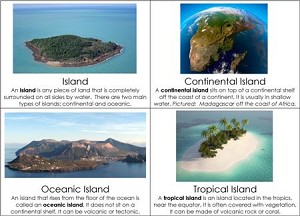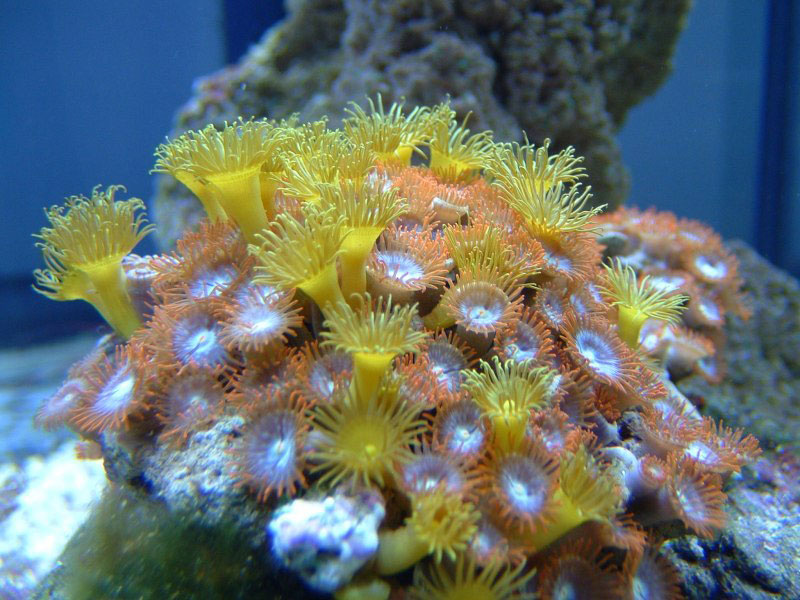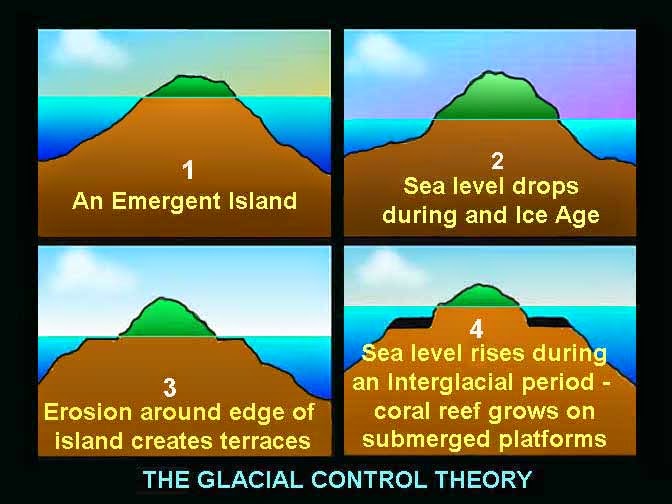-
Chapter 7: ISLANDS
Introduction
Islands
A piece of land surrounded by water on all sides. Generally formed of the following types:
- Continental islands: These islands were formally a part of the mainland and now detached from the continent by a shallow lagoon or a deep channel. The rise in sea levels then submerged the low lying areas that connected them. The evidence of this is the presence of identical flora and fauna on both sides of the land.
- Individual islands: These lie just outside the mainland very much associated with the characteristics of the mainland they were once a part of.
- Archipelagoes: Groups of islands varying in shapes and sizes.
- Island arcs: Islands form an archipelago in the shape of a loop around the mainland, marking the continuation of mountain ranges which can be traced on the continent.
- Oceanic islands: These are isolated islands that lay thousands of miles away from the mainland. They have flora and fauna different from the nearest mainland. They are usually sparsely populated but are useful stops for the aeroplanes and steamers.
- Volcanic islands: Many islands are actually topmost part of cones of volcanic mountains that rise from the ocean bed.
- Coral islands: These are lower and emerge just above the water surface. These are built by coral animals of various species and are found near the shores of mainland and in midst of oceans.
Types:
Types:

Coral reefs:
1. Sources of greatest biodiversity amongst marine ecosystems.
2.
They
are indicative of the health of the marine ecology. Cant survive
in muddied waters or polluted water. They need sediment free
water.
3.
Primary
food chain. Home to Zoantharia which is aquatic primary
producer.

Fig 2: Zoantharia
Characteristics of coral reefs:
1. Corals are tiny fleshy sea anemones. They extract calcium from the sea and form skeletons to protect their bodies.
2. Each generation dies on top of the previous.
3. They have a symbiotic relationship with microscopic plant Zoantharia which are photosynthetic in origin.
4. They corals provide protection to Zoantharia and Zoantharia provide food to the corals.
5. When corals are in stress they expel Zoantharia and become white. Ultimately they die without food.
Conditions needed for coral reefs:
1. Shallow platform where sunlight reaches.
2. Temperature 25-27°
3. Warm, tropical and low latitude waters.
4. Salinity should be 33 ppm.
5. Not at mouth of the river; they need circulating nutrient rich water.
Reasons for coral bleaching:
1. Global warming and ozone depletion
2. Ocean acidification,
3. Algal bloom
4. Marine pollution and oil spills.
Formation of coral reefs:
1. Fringing reef: coral reef is formed bordering an island or continent. A distance is created between island and the reef. Here small water bodies are seen to form called lagoons.
2. Barrier reef: reef isn’t continuous but broken. The lagoons can connect to ocean. Here the coral reef if formed parallel to the coast it’s called barrier reef.
3. Atoll: the hill is submerged and now only narrow ring of reef is visible.

Fig 3: Formation of reefs
Theory of Reef Formation
Formation of reefs: Subsidence Theory by Darwin
All reefs started as fringing reefs of islands or top of volcanoes that emerge out of sea bed. Then these islands subside with Earth movements.
However the fringing reefs continue to grow upwards. The corals also continue to grow outwards as more favorable conditions are seen there then at the inner edge.
Finally a barrier reef is formed and this becomes an atoll as the inner island is completely submerged due to the down warping.

Glacial Control theory: RA Daly
He said that a close relationship exists between the Glaciation and Coral reef formation. The theory states that the Ice Ages saw a great marine erosion due to absence of coral barriers. The erosion lowered the islands.
Then as the glaciers melted the water levels rose. The coral activity started and now the island was covered by corals. However, as the island submerged due to erosion and wave action, the corals continued to move upward to rise above the water level. This created Atolls.

Chapter Review
Score more than 80% marks and move ahead else stay back and read again!